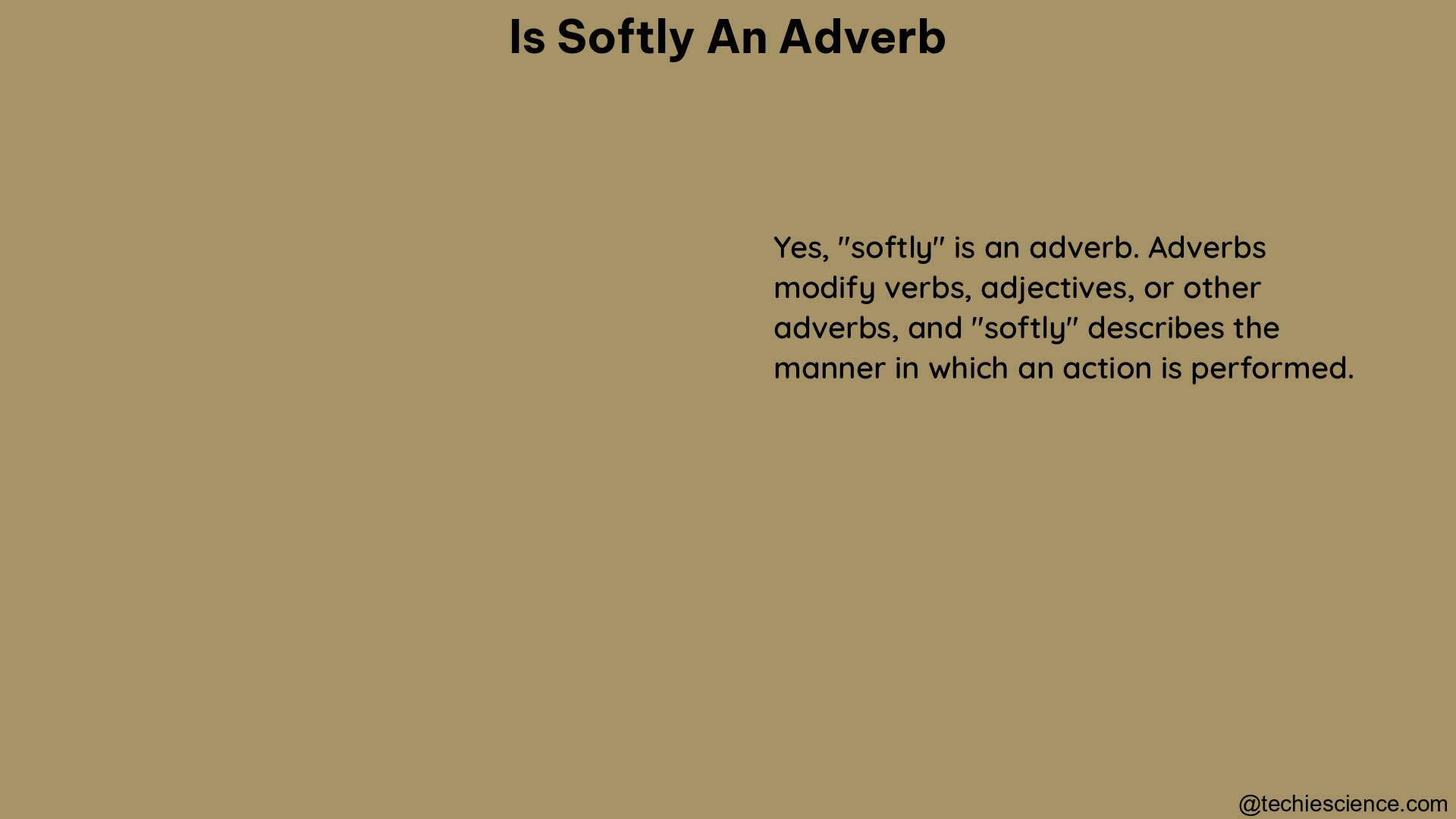Yes, “softly” is an adverb that is used to describe the manner or degree of an action, typically indicating that the action is done gently, quietly, or with a soft touch. Let’s dive deeper into the grammatical specifications, examples, and theoretical explanations surrounding the use of “softly” as an adverb.
Grammatical Specification of “Softly” as an Adverb
Adverb Suffix “-ly”
“Softly” is an adverb that ends in the suffix “-ly,” which is a common characteristic of many adverbs in the English language. This suffix is used to transform adjectives into adverbs, allowing them to modify verbs, other adverbs, or even adjectives.
Modifying Verbs, Adjectives, and Adverbs
As an adverb, “softly” can be used to modify various parts of speech, including:
- Verbs: “She spoke softly to the child.”
- Adjectives: “The music was played softly.”
- Other Adverbs: “He walked extremely softly, not wanting to make a sound.”
By modifying these elements, “softly” provides information about the manner or degree in which the action is performed, conveying a sense of gentleness, quietness, or subtlety.
Grading Adverbs
Like many other adverbs, “softly” can be graded using degree adverbs such as “very” or “extremely.” This allows for more precise descriptions of the intensity or degree of the action:
- “She spoke very softly.”
- “The music was played extremely softly.”
Examples of “Softly” as an Adverb

- Speaking Softly: “She spoke so softly it was hard to hear her.”
- Gentle Actions: “He opened the door softly, not wanting to wake his sleeping wife.”
- Whispering: “They whispered their secrets softly to each other.”
- Lighting: “The room was softly lit by a lamp.”
- Touching: “She touched the baby’s cheek softly, not wanting to startle him.”
- Singing: “The lullaby was sung softly to soothe the child to sleep.”
- Closing: “He closed the book softly, trying not to disturb the others in the library.”
- Stepping: “The cat walked softly across the room, its paws making barely a sound.”
- “The wind blew softly through the trees, rustling the leaves.”
- “The pianist played the melody softly, with a delicate touch.”
Theoretical Explanation of “Softly” as an Adverb
Manner Adverbs
“Softly” is a manner adverb, which means it describes the way an action is performed. Manner adverbs like “softly” are often used to convey a sense of gentleness, quietness, or subtlety in the execution of an action.
Distinguishing from “Slowly”
It’s important to note that “softly” should not be confused with “slowly,” which is another adverb that describes the rate or pace at which something occurs, rather than the manner in which it is done.
Adverb Placement
Adverbs like “softly” can be placed in different positions within a sentence, depending on the emphasis and meaning the speaker or writer wants to convey. For example:
- “She softly spoke to the child.”
- “Softly, she spoke to the child.”
- “She spoke softly to the child.”
The placement of “softly” can subtly change the focus or emphasis of the sentence.
References
- Cambridge English Dictionary – Definition of “softly” with examples
- Promova – Explanation of “softly” as an adverb with examples and tips
- UCL Internet Grammar – Adverbs, including “softly,” with their grammatical characteristics and examples
- Oxford Learners Dictionaries – Definition and usage notes for “softly” with examples
- Oxford Learners Dictionaries (American English) – Definition and usage notes for “softly” with examples

Hi! I am Bhabesh Sing. I have completed M.A in English, M.A in Vocal Music, and B.Ed. I am a creative writer. Currently, I am a Subject Matter Expert in English on this Platform.
Let’s connect through LinkedIn-https://www.linkedin.com/in/bhabesh-sing-660914ab